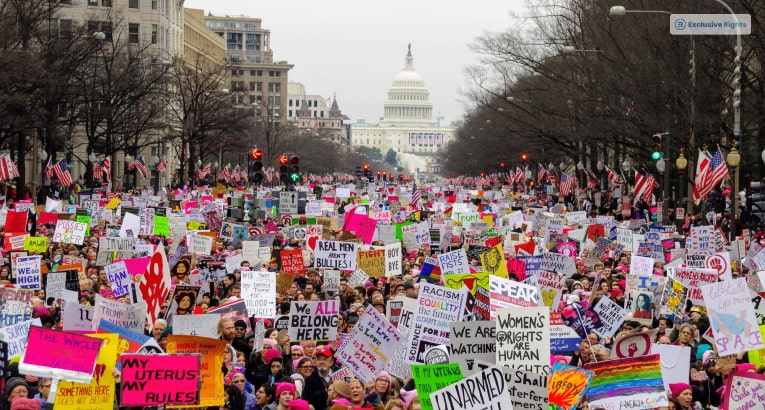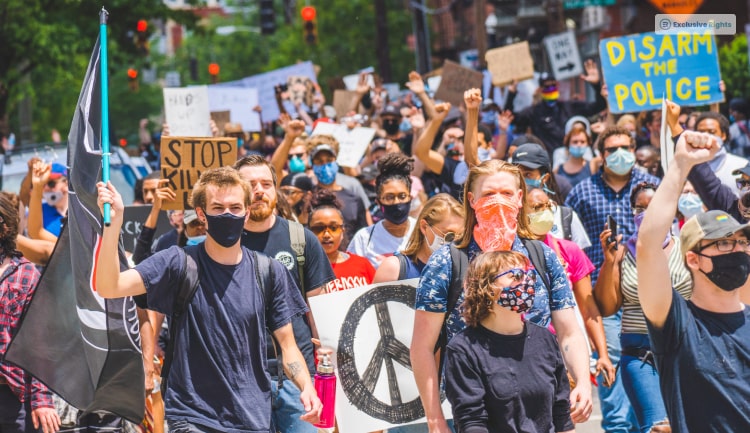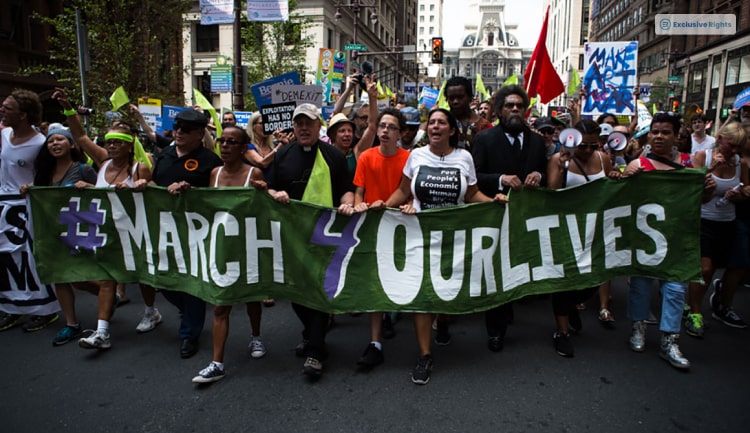
Table Of Contents
Strength In Numbers: Freedom of Peaceful Assembly And Association
Did you know: Iconic figures of the American Civil Rights Movement, Martin Luther King Jr. and Rosa Parks, utilized the freedom of peaceful assembly and association in arranging peaceful protests, marches, and boycotts, leading to revolutionary social and political changes in the United States of America.
Freedom Of Peaceful Assembly And Association: Meaning

The right to peaceful assembly allows individuals to gather in public or private spaces for a common cause. Such an assembly is no longer punishable by law due to this right. It includes the right of an individual to participate in peaceful protests, exchange opinions and ideas, and also participate in other public events. This right has been an integral part of all democratic societies and enables citizens to collectively voice their grievances.
The right to association guarantees the freedom to join associations, groups, or other organizations to an individual. An individual can join political parties non, government organizations, social organizations, trade unions, and all other associations that require voluntary participation. The people participating in these associations have common interests or goals and work collectively to achieve certain objectives.
You are probably exercising your freedom of people assembly and association every day. These are the most common examples of this fundamental right.
- If you are participating in public protests and public demonstrations.
- If you are a member of a trade union and participate in labor movements.
- If you are part of a social all, recreational club based on your interest and hobbies.
- If you prefer certain political ideologies to others and have associated yourself with these political parties.
- If you have ever been a part of any student club or organization.
There is a high chance you have at least been a part of one of the above-mentioned things so far. If yes, then you definitely have to exercise your fundamental right of freedom of peaceful assembly and Association.
Freedom Of Peaceful Assembly And Association: International Instruments

There are several International instruments that guarantee the freedom of peaceful assembly and association of an individual. Let us look at some of them.
a. Article 20 of the Universal Declaration of Human Rights.
b. The International Covenant on Civil and Political Rights (Article 21 guarantees the right to peaceful assembly, and Article 22 guarantees the right to association).
c. Article 11 of the European Convention on Human Rights.
d. Articles 11 and 10 of the African Charter on Human and People’s Rights.
e. Lastly, the American Convention on Human Rights (Article 15 guarantees the freedom to peaceful assembly, and Article 16 guarantees freedom to association).
Special Initiatives Taken By The United Nations
Over time, numerous initiatives were taken by the United Nations to guarantee the protection of freedom of peaceful assembly and Association at global and regional levels.
- A special rapporteur has been appointed by the United Nations, who conducts research and engages with various governments to practice freedom of peaceful assembly and Association. They also prepare reports on any infringement of fundamental rights going on in the member Nations.
- The universal periodic review is conducted in all member states of the United Nations. It assesses whether member states are in compliance with the right to freedom of peaceful assembly and association and other fundamental rights.
- Collaborations with NGOs are also a common sight. The UN collaborates with various organizations to ensure that your fundamental rights are protected.
- The UN conducts various events and campaigns to raise awareness of freedom, peaceful assembly, and association.
USA’s Take On Right To Freedom Of Speech
The United States places a significant emphasis on the right to freedom of speech, which is enshrined in the First Amendment to the U.S. Constitution. This amendment, part of the Bill of Rights, was ratified in 1791 and reads:
“Congress shall make no law respecting an establishment of religion, or prohibiting the free exercise thereof; or abridging the freedom of speech, or of the press; or the right of the people peaceably to assemble, and to petition the Government for a redress of grievances.”
The First Amendment guarantees individuals the right to express their opinions, thoughts, beliefs, and ideas without fear of government censorship or reprisal. This protection extends to a wide range of forms of expression, including spoken and written words, symbolic speech (such as flag burning), artistic expression, and even controversial or offensive speech.
However, it’s important to note that there are certain limitations and exceptions to the right to freedom of speech in the United States. These include:
Incitement to Violence: Speech that directly incites violence or poses a clear and present danger is not protected. For example, speech that encourages imminent harm to others or leads to lawlessness can be restricted.
Obscenity: The courts have ruled that obscene speech, which lacks any redeeming artistic, literary, political, or scientific value, is not protected.
Defamation: False statements that harm someone’s reputation and are not protected if made with reckless disregard for the truth (known as “actual malice”).
Hate Speech: Generally, hate speech is protected by the First Amendment unless it incites violence or poses a genuine threat.
Commercial Speech: While commercial speech is protected to some extent, it can be subject to more regulation than other forms of expression, such as advertising.
Time, Place, and Manner Restrictions: The government can regulate the time, place, and manner of speech, as long as these regulations are content-neutral, serve a significant government interest, and leave open alternative channels for communication.
National Security: In certain circumstances, speech that jeopardizes national security can be restricted.
It’s worth noting that the interpretation and application of these exceptions can vary over time and through court decisions. The balance between protecting free speech and addressing potential harm or societal needs is an ongoing debate in the United States.
Overall, the U.S. approach to freedom of speech reflects a commitment to open discourse, robust public debate, and the belief that allowing a wide range of viewpoints and opinions to be expressed contributes to a vibrant democracy.
Wrapping Up!
The Freedom of peaceful assembly and association is very significant to the workings of a democratic society. Time and again, the Supreme Court of the United States has passed rulings affirming an individual’s right to assemble peacefully and to associations.
- In the case of NAACP v. Alabama (1958), the Supreme Court deemed this fundamental right to be crucial for individuals to pursue their lawful private interests.
- In the case of Edwards v. South Carolina (1963), the Court stated that the state could not charge civil rights protesters with breach of the peace owing to the right to peaceful assembly.
- The ruling in Hurley v. Irish-American Gay, Lesbian, and Bisexual Group of Boston (1995), stated that private organizations could exclude certain groups from events.
The scope of the fundamental right to Freedom of peaceful assembly and association is large and only expands with time. However, this article is meant to give you an overall understanding of the workings of this right in a democratic setup.









